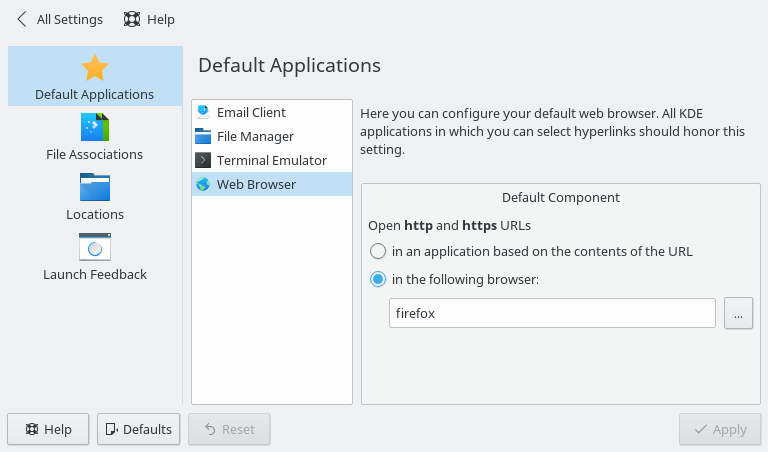Gonna have a go at this: Install Docker Desktop on Debian.
Tag Archives: debian
Extra Content #2: Motherboard upgrade from ASUS PRIME B550M-A to ASUS ProArt B550-CREATOR
This post is part of my video blog: In The Lab With Jay Jay.
You can support this channel on Patreon: patreon.com/JohnElliotV
This is a long and unedited video of me upgrading my computer from ‘longing’ https://www.jj5.net/sixsigma/Longing to ‘lore’ https://www.jj5.net/sixsigma/Lore
As I said today was computer upgrade day. I made a video of me doing the upgrade, it runs for about two hours: Motherboard upgrade from ASUS PRIME B550M-A to ASUS ProArt B550-CREATOR. It was pretty uneventful and so far it seems to have been successful too. Yay.
Following is a list of products I use which may appear in my videos. Clicking through on these links before purchasing from Amazon, eBay, or AliExpress is a great way to support the channel at no cost to you. Thanks!
Let’s go shopping!
Installing Nvidia firmware on Debian
Today I learned how to install nvidia firmware on debian. ChatGPT strikes again!
Default Chromium links on Debian
The default toolbar links which ship with Chromium on Debian are:
Installing Debian ‘sid’
See the installation guide. Basically: install ‘stable’ or ‘testing’ and then update apt sources and `apt update && apt dist-upgrade` your way to victory!
Debian Packages that Need Lovin’
There is a list of Debian Packages that Need Lovin’. The contents of the list are quite surprising. e.g. libreoffice, grub2, and samba make the list…
A folder named ~/.cache/kioexec/krun/13821_0/ already exists
2017-12-09 jj5 – TODO: document this on my blog…
On Debian GNU/Linux 9.1 (stretch) when I try to open an *.desktop (application/x-desktop) link in a browser I get:
A folder named ~/.cache/kioexec/krun/13821_0/ already exists.
Searching for:
A folder named kioexec krun already exists
turned up diddly squat.
I solved the issue (for me) by changing:
System Settings -> Personalization -> Applications -> Default Application s-> Web Browser
from:
Open http and https URLs in an application based on the contents of the URL
to:
Open http and https URLs in the following browser: firefox

Installing .NET on Debian 9
After installing Visual Studio Code I followed the instructions from .NET Tutorial – Hello World in 10 minutes, basically:
wget -qO- https://packages.microsoft.com/keys/microsoft.asc | gpg --dearmor > microsoft.asc.gpg sudo mv microsoft.asc.gpg /etc/apt/trusted.gpg.d/ wget -q https://packages.microsoft.com/config/debian/9/prod.list sudo mv prod.list /etc/apt/sources.list.d/microsoft-prod.list sudo chown root:root /etc/apt/trusted.gpg.d/microsoft.asc.gpg sudo chown root:root /etc/apt/sources.list.d/microsoft-prod.list
Then:
sudo apt-get update sudo apt-get install dotnet-sdk-2.1
Then for example to create a new console project:
dotnet new console -o myApp cd myApp
I ended up reading MICROSOFT SOFTWARE LICENSE TERMS for the MICROSOFT .NET LIBRARY which included this doozy:
The software may collect information about you and your use of the software, and send that to Microsoft.
Ah, Microsoft. You haven’t changed.
I found some notes about how to disable telemetry:
Telemetry
———
The .NET Core tools collect usage data in order to help us improve your experience. The data is anonymous and doesn’t include command-line arguments. The data is collected by Microsoft and shared with the community. You can opt-out of telemetry by setting the DOTNET_CLI_TELEMETRY_OPTOUT environment variable to ‘1’ or ‘true’ using your favorite shell.Read more about .NET Core CLI Tools telemetry: https://aka.ms/dotnet-cli-telemetry
I have added the opt-out environment variable via jj5-bin.
Backup Thunderbird data
I wanted a backup of my Thunderbird data on my Debian desktop, and I created it like this:
jj5@tact:~$ tar -c -f jj5-.thunderbird.tgz --use-compress-program='pigz -p 7 --best' .thunderbird
Adding weekday to Date column in Dolphin in KDE on Debian GNU/Linux
cd /usr/share/i18n/locales cp en_AU en_JJ vim en_JJ
Change metadata:
title "English locale for John Elliot V" language "John's English"
And prefix d_fmt with:
d_fmt "<U0025><U0061><U0020>
Then:
sudo localedef -f UTF-8 -i en_JJ en_JJ.UTF-8
Then:
vim /etc/environment
add add:
LC_TIME="en_JJ.UTF-8"











































































































